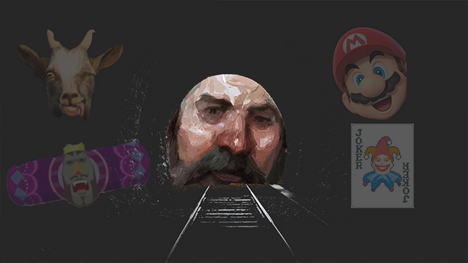
Featured Blog | This community-written post highlights the best of what the game industry has to offer. Read more like it on the Game Developer Blogs or learn how to Submit Your Own Blog Post
Welcome To My World: What Makes For Great Horror Game Settings
When it comes to playgrounds one can have lots of fun in, the virtual kind provided by video games is hard to top.
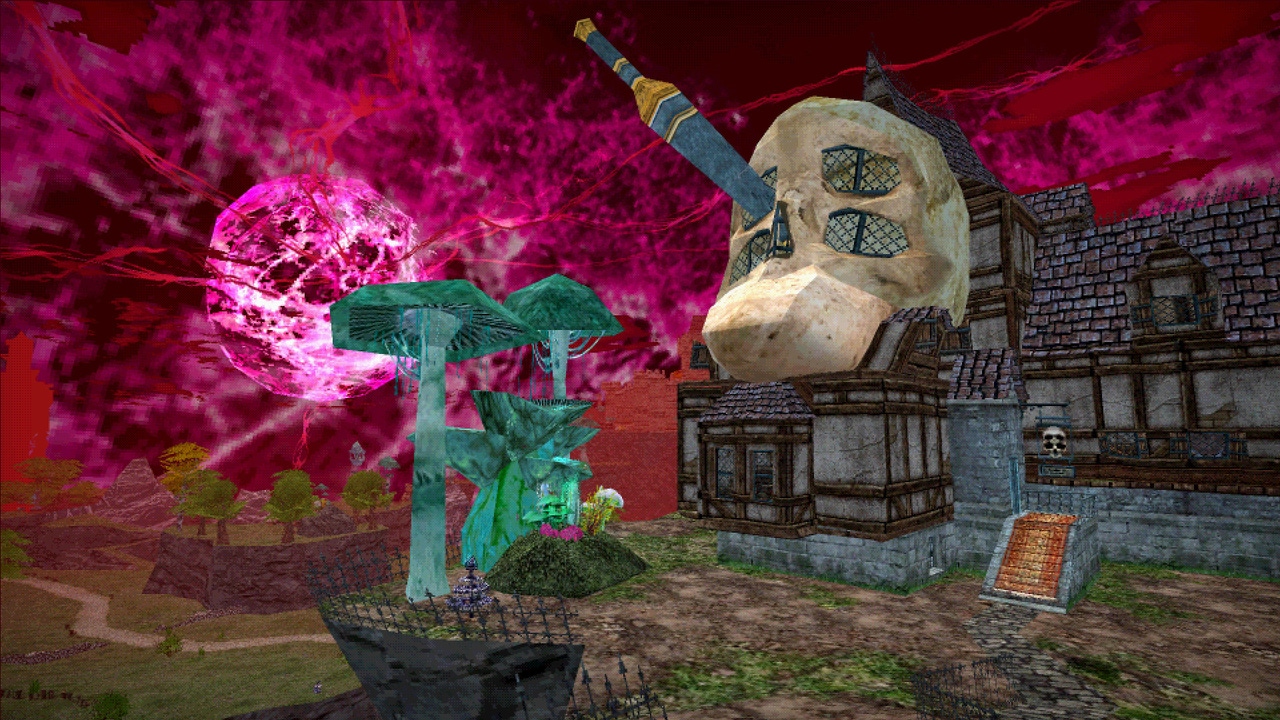
When it comes to playgrounds one can have lots of fun in, the virtual kind provided by video games is hard to top.
Whether that involves running and jumping around planetoids in Super Mario Galaxy (2007) or causing mayhem in a quaint English village in Untitled Goose Game (2019), players are spoiled for choice in terms of where they wish to fulfill their power fantasy. This is helped not just by level design and mechanics that invite folks to explore and experiment, but also by aesthetics that make players feel welcome and/or in control of the situation.
But let’s say the game wants you to play by its rules. Let’s imagine that the player’s dropped in an environment where the only thing they’re likely to invite is trouble should they get cocky or careless.
All of a sudden, things are looking less like a funhouse and more like something you’d find in one of gaming’s more daunting genres: horror.
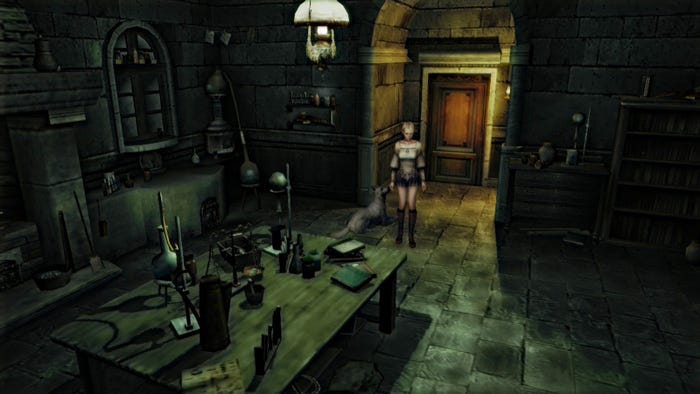
Belli Castle in Haunting Ground (2005), the titular mountainous area of Mundaun (2021)… Video games bear no shortage of places that initially disempower the player character(s) via their foreboding atmosphere, unwelcoming denizens, and a relative lack of resources for remaining upright rather than six feet under. Long story short, the power fantasy in such settings is just that: a mere fantasy. No point in entertaining it when one’s too busy trying to get out of a jam.
That said, crafting quality settings in horror titles doesn’t mean slapping in jump scares, dim lighting, and calling it a day. That would hardly lead to something that lingers in players’ minds.
Via things like loopy level design, unpredictable encounters, haunting aesthetics, and the like, locations in horror games can make players feel apprehensive, compelled to exercise caution, and relieved once they get out of the proverbial tunnel in one piece. In other words, great horror locales should make gamers think that they’ve gone to hell and back—in turn making them feel proud and empowered. After all, one can’t have a diamond without some friction.
And if it’s to shine brightly, the gem needs to emerge from the darkest (and harshest) of places.
NOTE: The tips in this article may or may not be compatible with every game depending on the designer's vision, but they serve as general tenets that can benefit the experience when well implemented. Spoilers abound since details about the settings shall be discussed.
Imbue them with atmospheric tension to keep players on edge
Just like any other video game universe, horror settings must look, sound, and feel the part to sell players into the fantasy the genre advertises.
In this case, a horror game backdrop should make players feel like they’re in harm’s way just through the mere act of standing in place, sizing up their surroundings, and waiting for the other shoe to drop. Or rather, waiting for an undead and bloodthirsty creature to emerge.
To achieve this, developers should take into consideration the kind of haunting visuals and soundscape they envision for their project. They also have to make sure that they’re tonally consistent enough not to break player immersion but unpredictable enough to keep players from memorizing patterns in the atmosphere and therefore treating the vibes like wallpaper.

Such are the criteria that the Zone from the S.T.A.L.K.E.R. series (2007 – Present) meets in every part of the Eastern European locale players happen to be adventuring in.
The product of a second Chornobyl disaster, the Zone is, aesthetically speaking, very much a reflection of the Soviet Union’s shattered socioeconomic project—courtesy of the ruined infrastructure and decaying vehicles players will often run by.
But it’s the moment players venture into the wilderness for the first time that’ll convince them that they’ve entered a forsaken place best left spared from human meddling. From the howling of feral (mutated?) cats in the distance to the monochromatic and grainy filters that cover the screen whenever players get close to a radiated and/or psychically contaminated area, the Zone’s ambient features pull no punches in the “leave while you can” department.
Ergo, no number of supplies or weapons will allow players to purge themselves of the feeling of dread the Zone imparts. The only way to free oneself from it is if they let themselves get killed.
Juxtapose moments of silent dread with bouts of terror
In the same way that a game needs to provide varying vibes to keep the atmosphere from feeling static over several hours of gameplay, horror titles need to provide a contrast and balance between quiet moments and pulse-pounding ones to ensure players never know what to expect around the proverbial corner.
By doing so, a horror setting can make itself routine-proof—meaning that gamers won’t be able to form habits of any kind that can make their playstyle efficient at the cost of negated challenges.
This can be anything from the way players deal with monsters blocking their path to how they expect a specific kind of scripted event to play out in any given sublocation. Whatever the gameplay aspect, players must never feel like they’re in complete control of their circumstances and/or surroundings.
Besides, the first step to destroying the avatar’s sanity is to shatter their expectations about what they may find on the other side of a door, deep in the basement, or further down a dimly lit hallway.
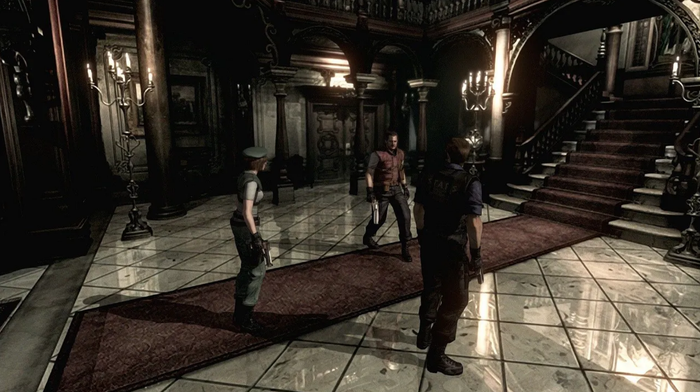
If there’s one location that has not only taken this step but also a mile’s worth of them, it would be the Spencer Mansion from the 2002 remake of Resident Evil.
As with its 1996 counterpart, the mansion prides itself on featuring winding and twisting corridors full of locked doors and shambling zombies looking for their next meal. While the blend of (relatively) quiet rooms and enemy-infested areas remains accounted for in the remake, Capcom saw to it that things would be different where enemy behavior was concerned.
Between the delayed appearance of the window-shattering Cerberus dogs and the introduction of nimble and claw-sporting Crimson Heads, the tweaks made to the classic Resident Evil formula ensure that returning players and newcomers alike will always have their composure shattered just as they are about to get settled into the routine of unlocking doors, solving puzzles, and acquiring progress-enabling items. It also doesn’t help that the bouts of terror gamers are bound to experience are amplified by the limited saves they can make.
As a result, the Spencer Mansion succeeds in making each trip outside safe rooms a game of Russian Roulette: What are the chances that steady but tense exploration is interrupted by a threat players are unprepared for? What items are they to carry prior to venturing outside or in a specific part of the mansion? In Resident Evil, respite is as rare as an ink ribbon.

Make them a challenge to navigate and make sense of
Of course, virtual horrors need more than just scary aesthetics and unpredictable patterns to haunt players in the long term. There’s also the fact that the avatar shouldn’t be able to easily outrun or size up whatever they’ve gotten themselves into.
More specifically, horror environments should make players feel like a lab rat stuck in a maze they can’t swiftly get out of—a maze with walls and floors that seem to literally and figuratively shift at every turn. While this principle can easily apply to making the levels themselves prone to sudden and unexpected variations in their layouts and contents, it can also pertain to audiovisual tricks and narrative touches that render story details ambiguous and/or unreliable.
Whatever the means, the end goal in that respect should be to make the horror setting something that defies human understanding and treats its visitors the same way a cat toys with its prey to weaken it prior to delivering the finishing blow. This should be the case regardless of how good gamers get at managing resources and exercising caution every step of the way.
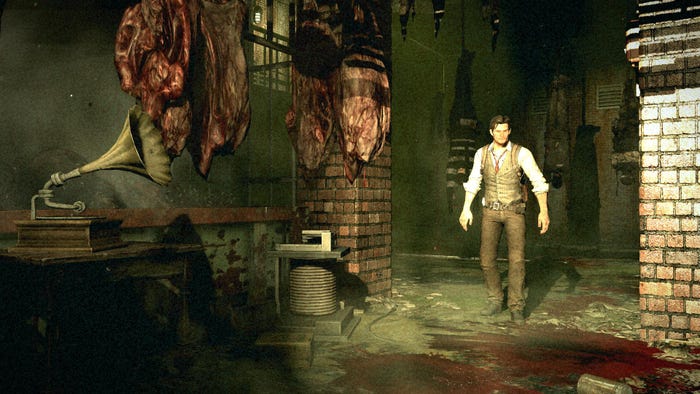
One horror setting that never seems to let up on that front is STEM from the Evil Within titles (2014 – 2017). Essentially a perfect mechanism for generating all sorts of horrific imagery via a machine-enabled mental world made up of different human minds, STEM is as fluid and messy as the human psyche.
This isn’t helped by the fact that mad folks can call the shots and hijack the system to carry out their devilish plans.
Whether it’s a decaying metropolis full of masked husks for human beings or a bunch of floating hallways monitored by a giant blue eye that doubles as a camera, each location in STEM operates and differs from one another without rhyme or reason. This adds to the feeling of helplessness that the lead character and innocent bystanders embody as they try to piece out the full story behind STEM and its malicious creator.
Perhaps STEM’s defining and most disturbing characteristic is its ability to shift the environment at a moment’s notice—causing the avatar and nearby NPCs to fall down a hallway-turned-hole and watch as enemies spawn in a way that can only be described as paranormal. That everything is the byproduct of a troubled mind or two further drives home the idea that horrors can fundamentally be a reflection of people’s twisted perception of their world and woes.
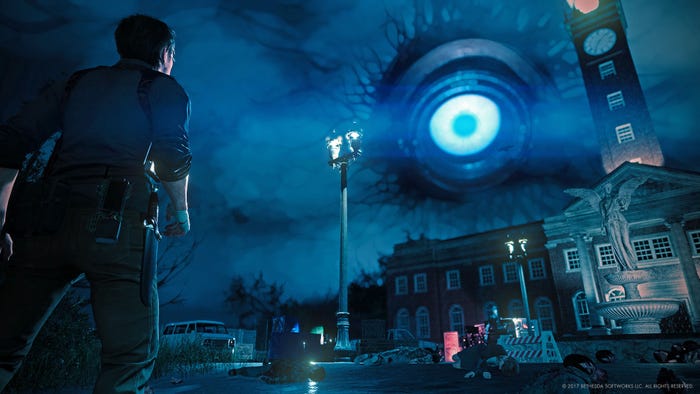
Add variety to levels and their contents to surprise players
Horror settings depend on their being unpredictable to ensure that players can’t get used to exploring spooky-looking/-sounding locales. Related to offering bouts of terror and hard-to-understand realities is the need to shake things up a bit in terms of level design and content, the result being that each area surprises players regardless of how far they are into the game.
Be it through a thematic change, different gameplay style, and/or unforeseen series of narrative beats, areas within a horror setting can benefit from all manner of tweaks to the formula established throughout the player’s journey into the heart of darkness.
While care must be taken to ensure that everything still feels like it belongs alongside the rest of the experience, developers needn’t shy away from a chance to upend player expectations if it means making the adventure more memorable and adding another beneficial gameplay and/or narrative layer to the proceedings.
Besides, horror doesn’t have to rely just on blood and (exposed) guts to remind players of their being in an abnormal place.
This is something that’s on full display as players make their way deeper into the eponymous amusement park of Illbleed (2001). As its purpose suggests, the setting proves itself highly conducive to providing the environmental equivalent of a buffet—keeping the player’s proverbial taste buds from growing numb to the same ol’ taste and texture of whatever they’re hoovering up.
From the graveyard that players explore upon entering the amusement park to the toy department that harbors innocent-looking playthings that can double as traps for unsuspecting observers, Illbleed’s cornucopia of attractions and dangers maintains a delicate balance between meeting survival horror players’ expectations and presenting its own take on genre tropes out of left field.
Fancy a fight with live meat slabs and poultry on an oversized grill? How about taking on the role of a Woody knock-off and having to go to hell and fight not-Sonic the Hedgehog to rescue your loved one? Illbleed isn’t afraid (heh) to skew toward the weird and surreal if it means making players look forward to—or dread—whatever’s coming next in the following stage.
The outcome is a horror-coaster ride that delivers copious amounts of blood, scares, and even laughs to offset the grim and prevent things from becoming so depressing that players grow numb to the title’s attempts at unsettling them.

Provide them with some backstory contextualizing their state
As with other video game locales, a believable horror setting must have its reason(s) for being the way it is and/or bearing the stuff players will come across. Besides, it’s only natural for people to wish that they could make sense of creepy surroundings and figure out how best to navigate them.
This doesn’t necessarily mean explaining the odd phenomena impacting said setting—for that would make the unknown less terrifying—but lore can paint a picture of a world larger than what gamers will be able to see. This can paradoxically result in them wanting to search every dark (and dangerous) area they can find, even if a part of them wants to get out of Dodge.
Backstory, however, can be more than just flavor text that doubles down on the tension permeating the experience. It can also provide players with ideas of where to look for clues and items that may help them make further progress in the game, making such narrative elements similarly relevant to those wishing to focus on the gameplay side of things.
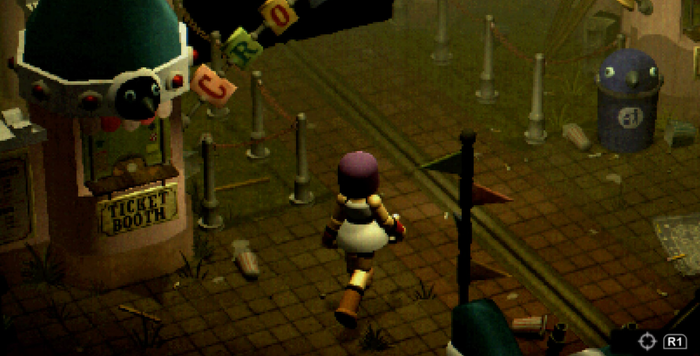
This is an area in which Crow Country (2024) excels, its titular theme park housing all sorts of baneful attractions and often funny notes that shine a light on how things used to be and what players can do to make it out alive and sane.
Between the set of instructions on how to get a treasure chest to open in a nautical-themed restaurant and the series of messages hinting at shady mining operations in which the park’s owner is implicated, Crow Country’s collectible notes help shine a light on why and how a seemingly innocuous amusement park went the way of the dodo not long ago. The lean writing ensures that players will get just the right amount of information and context to be compelled to collect more texts, even if it means having to venture into rooms full of traps and monsters.
What’s impressive about SFB Games’ efforts is that the title’s narrative bits and pieces maintain a balance between storytelling and gameplay considerations, providing all players with at least one incentive to bother looking for notes. This, in turn, helps drive the exploration-combat-puzzle loop emblematic of the survival horror genre—satisfying players’ innate desire to explore every virtual nook and cranny and balancing that out with terrifying obstacles that add a risk-reward element to their endeavors.
In other words, the presence and placement of texts—hardly exciting on their own—contribute to Crow Country’s success in feeling as thrilling (or scary) as riding a roller coaster.

Have them share a bond of sorts with the player character(s)
As mentioned in a previous article on horror protagonists, tension doesn’t just arise from a setting looking and sounding like something wholly alien. Such a feeling can also be amplified by the player character’s realization that they might have more in common with their harrowing surroundings than they’d care to admit.
Horror settings are more than just spooky virtual spaces players venture into at their own peril. They can also be reflections of the woes its inhabitants and visitors embody, adding a personal element to the environment’s monstrosities and ghastly happenings that can render even the sturdiest of souls mad. And if the player character’s one that gamers would love to know more about, then they’ll be tempted to wend their way into the darkest reaches of the setting—and potentially learn things about their character that recontextualize the narrative.
Ergo, the simple inclusion of a bond between the setting and the player character can add another layer to the narrative and compel players to find everything they can about their avatar—allowing the horrors on display to be more than skin-deep in terms of how greatly they can wound the player character.
Silent Hill 2 (2001) is an excellent example of a title sporting a setting that aims to put the player character through the wringer and have them learn something invaluable (about themselves) via the horrors they’re to face.
As James Sunderland, players will make their way through the eponymous resort town to look for their character’s wife. As they do so, they shall come across all kinds of monsters and locales whose scariest trait isn’t their baleful looks, but rather their sheer variety and potent ties to James’s personal struggles as a husband and human being.
From highly suggestive nurses roaming hospital hallways to pyramid-headed executioners looking for their next victim to impale, Silent Hill’s many supernatural denizens carry heavy-hitting symbolism that cuts more deeply into James than the rusty weapons they happen to be wielding. This ensures that the scars James leaves with aren’t the kind people can necessarily see, but rather the sort that time may not be able to fully heal.
The result is a setting that can have horrors lie not just around the player character, but also seep into them as their psyche starts to crack under the pressure of being stalked by unknown forces.

Let me know what you think of my post in the comments section, and feel free to ask questions and share the article.
Twitter: https://twitter.com/Watfen64
Email: [email protected]
About the Author(s)
You May Also Like







.jpeg?width=700&auto=webp&quality=80&disable=upscale)


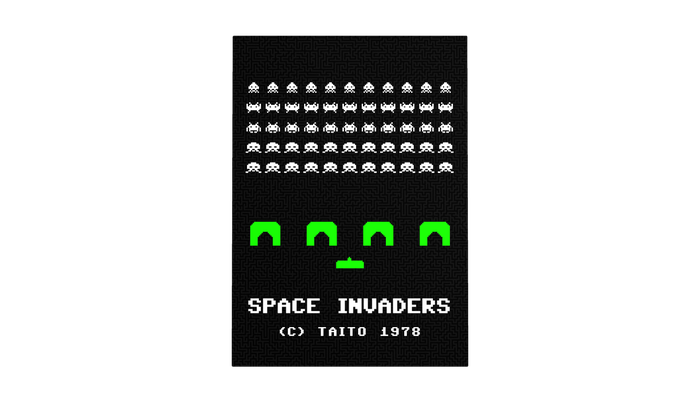
.jpg?width=700&auto=webp&quality=80&disable=upscale)
